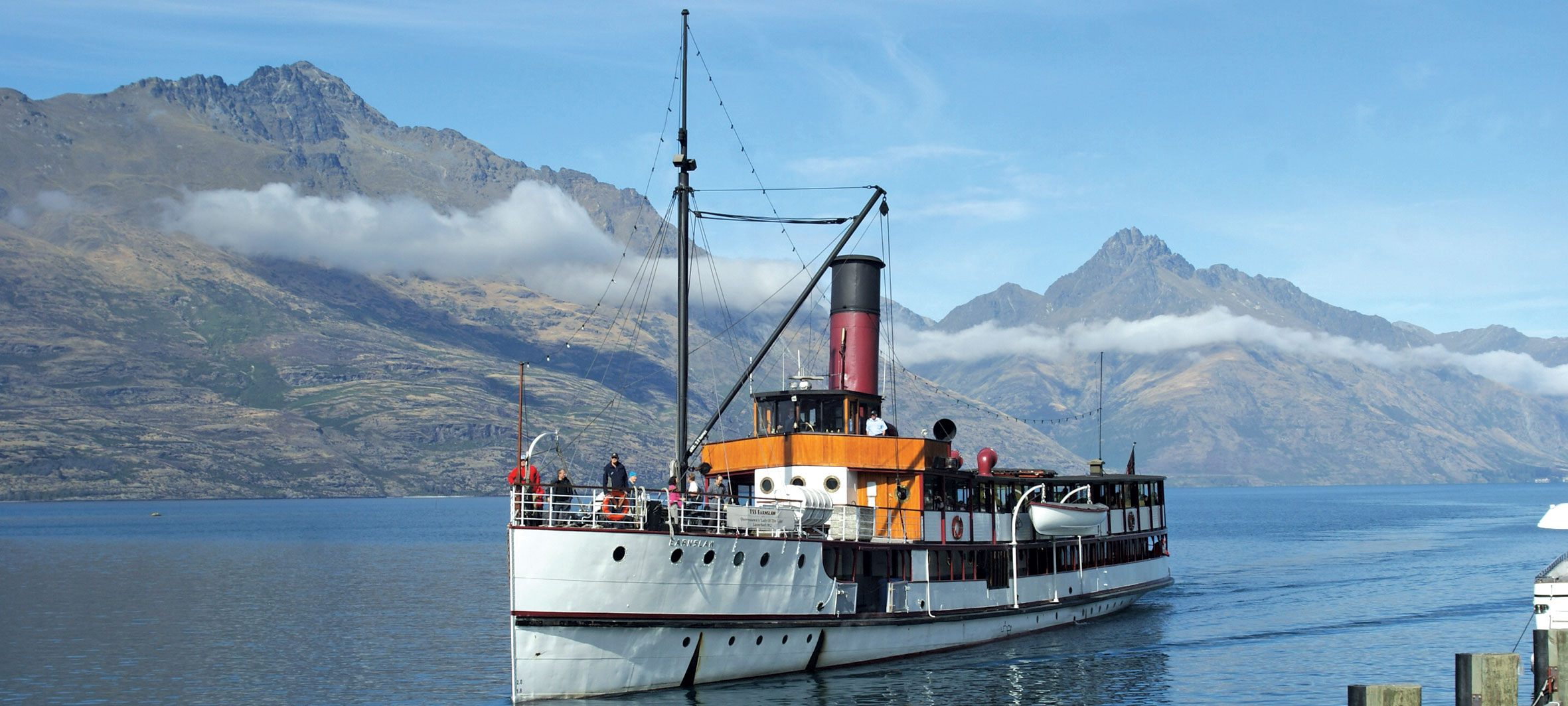- Topics
- Campaigning
- Careers
- Colleges
- Community
- Education and training
- Environment
- Equality
- Federation
- General secretary message
- Government
- Health and safety
- History
- Industrial
- International
- Law
- Members at work
- Nautilus news
- Nautilus partnerships
- Netherlands
- Open days
- Opinion
- Organising
- Podcasts from Nautilus
- Sponsored content
- Switzerland
- Technology
- Ukraine
- United Kingdom
- Welfare

Wakatipu is New Zealand's third largest and, at 80km, longest lake. The discovery of gold in the region helped to fuel a flourishing shipping service on its waters from the middle of the 19th century. By Andrew Linington
In 1902 the country's government bought the Lake Wakatipu Shipping Company and its three ageing paddle steamers, Five years later, ministers approved funding for a purpose-built new vessel – TSS Earnslaw – which is still in service today.
The ship was designed to improve the quality of services on the lake and, at 51.2m long, was not only the biggest vessel on the lake but also the largest steamship built in New Zealand.
The twin-screw steamer was fitted with two sets of triple expansion 500hp jet-condensing steam engines giving a service speed of 13 knots.
Work on Earnslaw began at the McGregor yard in Dunedin in July 1911, and when the hull was completed in November that year, the vessel was dismantled and the carefully labelled and numbered parts were transported to the lakeside town of Kingston, 100 miles away, to be reassembled.
Launched in April 1912, Earnslaw made a maiden voyage from Kingston to Queenstown in October of that year – an event of such local significance that the day was declared a public holiday.

TSS Earnslaw's 1912 maiden voyage on Lake Wakatipu was an event of such local significance that the day was declared a public holiday
With a passenger capacity of 1,035, and up to 100 tons of cargo or 1,500 sheep, 200 bales of wool or 70 head of cattle, Earnslaw and its crew of 11 played an important role for almost 50 years in keeping the isolated lakeside communities supplied and carrying livestock, people and produce to and from the surrounding high country stations.
On Easter Sunday 1914, Earnslaw carried a record number of 1,027 passengers – but over the next 30 years an increasingly extensive road network around the shores of the lake cut passenger numbers dramatically. Earnslaw became the only vessel to operate on the lake and, after helping to lay some telephone cables to connect local towns and villages, the ship was nearly scrapped in 1968.
Faced with mounting losses, New Zealand Railways agreed to lease the ship to the tourist firm Fiordland Travel and the company took over the operations at the end of the year. Passenger capacity was reduced from 1,035 to 747 in 1970, but after some initially difficult years Earnslaw has gone on to become a major tourist attraction, running cruises for 11 months of the year and 14-hour days in the summer months.
The ship has undergone very few modifications in more than a century of service – engines and boilers are original, although the maximum working pressure has been reduced and steam-driven generators have been replaced by diesel alternators.
In 1954 the steam engines were dismantled and reconditioned and in 1960 the ship underwent the first hull repair since launch – with three hull plates having to be replaced as a result of corrosion from soapy water dripping from the galley sink. Earnslaw underwent a major makeover in 1984, with the upper deck being enclosed and an enclosed wheelhouse added to the previously open bridge.
